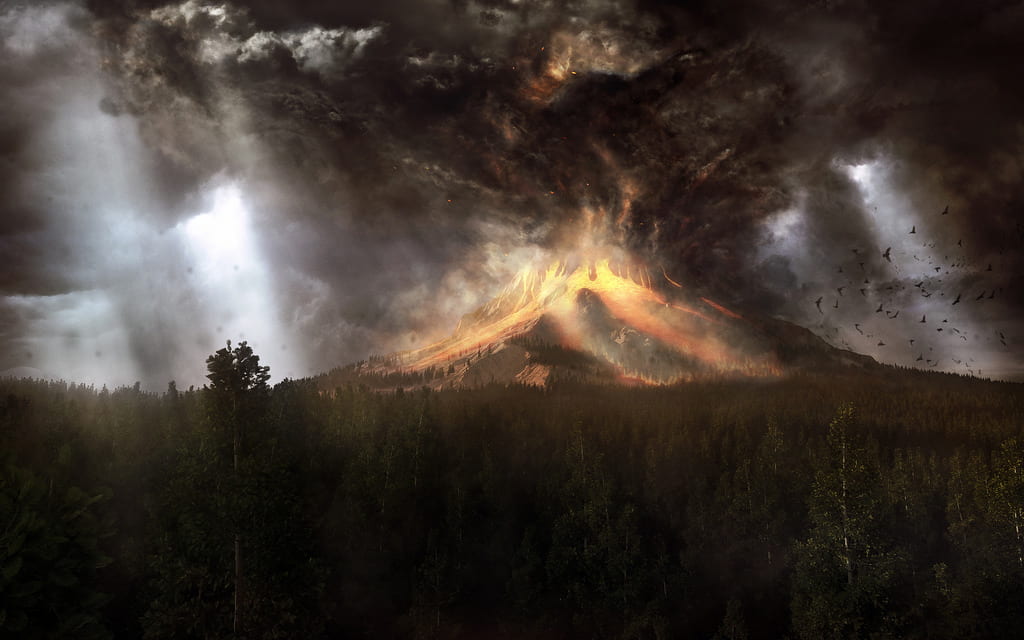
When Life Almost Ended Permian-tly…
By Kim Meyers, Class of 2016

What makes Earth so extraordinary is the life it homes. Life occurs in so many different shapes and forms and occupies so many different habitats. But there was a period in Earth’s history when life almost…
…ceased.
And scientists can’t yet explain why.
Mass extinctions have always been a part of Earth’s history with our planet having to endure five of these incredible losses of life. We identify a mass extinction by the loss of huge numbers of species over a period of time that is short relative to the age of the Earth itself. I feel it’s safe to assume that the word ‘extinction’ makes us immediately think of the dinosaurs, those great reptilian giants whose reign ended 65 million years ago. But the greatest extinction event the world has ever known occurred 250 million years ago during the Permian period. An extinction event so catastrophic it’s been nicknamed The Great Dying.
And the nickname is well earned.
More than 95% of marine life and 70% of terrestrial species were wiped out during the Permian extinction. Scientists looking at rock samples from the Permian period have also discovered a global spike in fungal activity, an occurrence that can be linked to the decomposition of tree matter. Which leads to a terrifying conclusion.
Almost all of the trees, all over the globe, died.
We know that the planet underwent a colossal loss of life but the question of ‘how?’ still remains. Scientists in the field have picked up on clues and have developed hunches but don’t really have enough evidence to concretely determine the cause.
One theory is that the problem was in the oceans. That unlike our planet today, the Permian Earth lacked icecaps and so there were no ocean currents. And without currents to mix oxygen-rich and oxygen-poor water, the oceans stagnated and carbon dioxide built up. This lack of oxygen would have gradually suffocated marine ecosystems, leading to the loss of so much life. But it still doesn’t explain why so many terrestrial species kicked the metaphorical bucket as well.
Two other theories differ in the initial event but are ultimately the same in the way they brought about world-wide effects. The first is that like the dinosaurs, an asteroid collided with Earth and produced horrendous results. The other is volcanic activity on an unimaginable scale, proof of which lies in the Siberian traps. The traps are made up of 2.6 million square kilometres of solidified lava which is almost equivalent to the span of 130,000 MCGs. What’s more, this lava is approximately 4 kilometres thick. That’s nuts.
Both an asteroid impact and volcanism would have killed a countless number of animals with the initial event. The release of noxious gases, debris and acid rain falling from the sky would have been enough to cause a huge amount of destruction. But the aftermath of either of these events was what would have spelled doom for the planet. The noxious gases and debris propelled into the atmosphere would have choked out the sun, shrouding the Earth in darkness. Without sunlight, global temperatures would have dropped, leading to glaciation. With glaciation, water from the oceans would have been stored as ice, causing the sea level to drop and wreaking havoc within marine environments.
But the effects go beyond the oceans. Without sunlight, plants cannot photosynthesise. They cannot convert solar energy into chemical energy so it can then be passed throughout the food chain. Once all the plants died out, there would have been little hope for the animals. Once the foundation of the food chain gave out, it was just a matter of time before the rest of it collapsed entirely.
Although we can’t yet decide on the cause of the Permian mass extinction, many are happy to assume multiple disasters were to blame. Most importantly, events like this show us just how resilient life is. It shifts and changes according to the environment and although it may take on an entirely different form, it is still life.
But this resilience is being challenged yet again.
Humans have started the sixth greatest extinction event in Earth’s history. The abuse we have inflicted on our planet has left many species on the brink of extinction with many more having lost the battle already. While life is amazingly resilient we must still do all in our power to nurture it in all its forms and prevent the next great extinction.